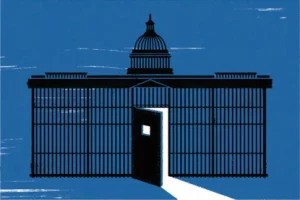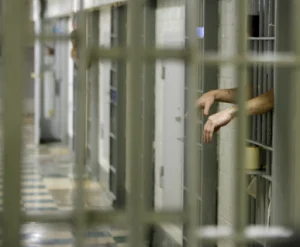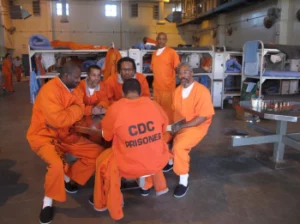
On December 5, 2016, Governor Chris Christie shot down an attempt to curtail the use of solitary confinement in New Jersey’s prisons, vetoing legislation that would have strictly limited the cruel practice. The governor also attacked its key sponsors in a fiery veto message, saying that the New Jersey Department of Corrections does not use solitary confinement, and thus a bill to limit it is not needed.
Today, as an incarcerated advocate and the founder of Families Against Solitary Confinement (a grassroots group created under the umbrella of The Minor Foundation), I feel compelled to comment not only on the decision to veto but also the progress made to get this bill on the governor’s desk. This bill was very important to me and many others, and it remains so despite the veto.
In the past two years, I have been sanctioned to more than 1,000 days of what the Department of Corrections calls “Restrictive Housing” in New Jersey State Prison. Even though I was released earlier than expected from this form of confinement, I am still suffering from the effects of being there. I spent over 100 days confined to a cell the size of a bathroom, in an environment where others around me had become so disturbed that they would throw bodily fluids on each other, and where officers engaged in many forms of abuse and misconduct.
There is no polite way to say it: what is going on within these units is disgusting, cruel, and should concern the public. No matter how much punishment an individual receives, there must be some kind of rehabilitation after the punishment. Many people do not realize that some individuals are leaving these Restrictive Housing Units and being released directly back into the community. In September, a man shot a police officer over 15 times, and it was later realized that he had spent a substantial amount of time in solitary confinement. Several years ago a man was released from a Restrictive Housing Unit and later killed the warden and injured several others. I don’t care what you call these units; the results they produce are the same, and they have no positive impact on inmates or on society.
If the Department of Corrections could stand behind its efforts in the Restrictive Housing Units, it would have no problem letting the press in. But they say instead that, “due to the safety and security of the facility, we cannot let you see these units”; and they also say that “in order to maintain a safe and secure environment, we need to have these units” … and to individual inmates, they say that, in order to maintain a safe and secure environment “we have to place you in a cell with a caged fence built around it, and a padlock, and soundproof padding to prevent you from communicating with anyone.” I was placed in solitary for such “safety and security” reasons, namely: that I advocate for justice, I write, I reveal these abuses to the public, and I encourage others to do the same.
How Solitary Confinement Works
The New Jersey Department of Corrections uses many forms of isolation. All have the same effect as solitary confinement, and all are conducive to the mental deterioration of inmates. Many times the information being disseminated to the public about solitary confinement is inaccurate, and people do not have a full understanding of the units and how they work. I will explain my own experience, which is the same as for many others, in the hopes of giving a clearer picture.

Disciplinary Isolation As Solitary Confinement
The disciplinary isolation process is two-fold. First, inmates receive an institutional charge, and if the charge is serious they are sent to Pre-Hearing Detention (PHD) Units, which are one form of isolation. If found guilty of the charges, inmates are sent to Administrative Segregation (Ad Seg) Units, where they can spend anywhere from 30 days to several years. At all times, these are considered “close custody” units, and the inmates are placed in restraints – handcuffs and waist belts – whenever they are being moved or transferred.
PHD Units are single cells where inmates are confined to a cell for 24 hours a day with the exception of shower days, which are every 3 days. Inmates are given 10-minute showers. While on PHD status, inmates are not allowed to go to recreation. PHD status can last for between 1 week and 8 weeks, while an inmate is awaiting a hearing before a disciplinary officer. The law states that inmates must be seen within 48 hours, but hearing officers often use postponements, resulting in extra time on PHD status.
When an inmate is seen by a hearing officer, he has a right to defend himself against the disciplinary charges and is entitled to request documents or camera footage, to cross-examine witnesses, and other options. But hearing officers are known to give inmates who request these things more time than inmates who do not. And because of the harsh conditions in the PHD Units, many inmates plead guilty just to get out.
As of September 29, 2015, the Department of Corrections changed its policies, specifically: terminating its use of solitary confinement, doing away with the PHD Units, and limiting the amount of time an inmate can get in Ad Seg to 365 days per incident.
This sounds great, right?
No. There is a terrible loophole.

The Department has simply changed the names of these units. There is no more Pre-Hearing Detention, but there is now a Pre-hearing Disciplinary Unit (confusingly, also called PHD). The time inmates spend in this Unit is credited to their Ad Seg time, but the conditions are the same if not worse than before.
Inmates housed in this PHD status cannot use the phone, cannot have their property, cannot write home, and cannot access the electronic grievance system. They are housed in cells the size of bathrooms, by themselves, usually without adequate clothing and property. These units are the very definition of solitary confinement.
When inmates are found guilty of the charges, they are no longer sanctioned to do time on PHD status, which used to be a 14-day maximum. Now, they are transferred straight to Ad Seg units, which are long-term isolation units. In essence, the Department has made it easier to be placed in long-term isolation.
Ad Seg, the long-term isolation units, can hold inmates for days or years, depending on the sanction. As a matter of policy, the Department of Corrections states that an inmate can only receive one year per incident, even if he is facing several charges from the same incident. But again, there is a loophole. If the inmate gets in trouble the next day – while in PHD or Ad Seg – the charge counts as a new incident, and the inmate can receive another year. Hence, if an inmate gets into several incidents while in Ad Seg, he can be sanctioned to multiple years in solitary confinement.
Other Forms of Solitary Confinement
Prison officials also have a common practice of placing inmates on Involuntary Protective Custody (IPC) status. If officials allege that they feel an inmate’s life is in danger, they can place him on this status as a matter of safety and security. As you might imagine, some inmates have spent decades on this status. Often, the Special Investigation Division (SID) is responsible for this placement, and they place inmates on this status if they sue the prison and engage in litigious behavior. Inmates on IPC status are denied fair due process, and no hearing officer will overturn the decision, even when it is clear retaliation.
In addition to IPC, there is another status called Temporary Closed Custody (TCC), which sends an inmate directly to isolation. The inmate can be held on TCC status for 72 hours or longer if granted by the administration. Inmates have spent 69 days on this status, in conditions worse than PHD or IPC. On TCC, an inmate is not allowed to have any contact with anyone and is not allowed to send or receive mail.
The final form of isolation is the Management Control Unit (MCU), designed to house inmates with severe behavioral problems. These units have come under a great deal of scrutiny, and the Department has been sued several times over them. Some inmates have spent decades in these units, and while some engaged in dangerous behavior, others were part of groups known for advocating and were placed there for that reason.

Solitary Confinement As Retaliation
The Department says that all of its isolation units are used only when needed.
Prior to my 21st birthday, I was told that if I continued to report misconduct in the prison, I would be placed in solitary. When I continued to advocate and seek justice, the administration lived up to its threat and placed me in MCU, alleging that I was a threat to the security of the facility. Then, the Special Investigations Division placed me on TCC and recommended that I be placed on IPC within 3 weeks, and so I was on several different statuses, and as I continued to report the misconduct, I ended up in a Maximum Security Cage cell, where I was prohibited from talking to anyone without the presence of a supervisor.
I continued to fight my way out of isolation, but many people cannot endure the retribution that comes to inmates who engage in advocacy. What happened to me was scary and took a toll on me as an advocate. But I say all of this because we must find a way to ensure that all inmates – and especially those who are stepping up to advocate on the front lines, exercising their First Amendment rights, and seeking to have their grievances heard – are not enduring this kind of torture.
What We Can Do To End Solitary Confinement
Today, I am seeking everyone’s help. Help me get the voices and cries of those affected by these units out into the public! Help me shed light on the abuse and corruption going on within these units! There are many ways to effectively advocate even with limited resources: by making calls, sending emails, and writing correspondence to the Department of Corrections. When I was in solitary, I was told many times that there was nothing that could be done. We live in a world where 140 characters on a social media platform can gain attention and advance a cause in a matter of minutes; thus, I will never believe that nothing can be done when it comes to prison reform and seeking justice.

I am asking you to forward this essay to all those who may be concerned and ask them to speak up and seek justice for those held in solitary confinement. I am asking you to step up and apply pressure at every angle of this issue. In particular, we cannot continue to advocate for individuals without contacting them to find out what’s really going on. My organization will give certain inmates within these units the opportunity to report on them through secure email, and this information will be provided to advocates who may be able to help as well as to keep track of patters of misconduct or abuse. My organization seeks to create a bridge between prisoners and advocates, and I will need all the help I can get!
We also need to dig deep to investigate this corrupt system. I started by reviewing public records through the New Jersey Open Public Records Act, and I discovered Department of Corrections memos and inter-office correspondence that acknowledge that the restrictive housing units contribute to mental health issues and violent behavior and contain other statements that contradict the Department’s claims about its use of solitary confinement. These documents are very important to me, because I know what it is like to have people question my credibility because I am incarcerated. I encourage the public, advocates, and others to do the same thing: let’s get these documents, review them, and share them widely through media platforms!
You can request documents by emailing opra-recordscustodian@doc.state.nj.us or by calling 609-292-4036, and start by asking for the Policies & Procedures Regarding Inmates in Administrative Segregation and the Proposed Rule Changes and Budget Reports for Fiscal Year 2017.
